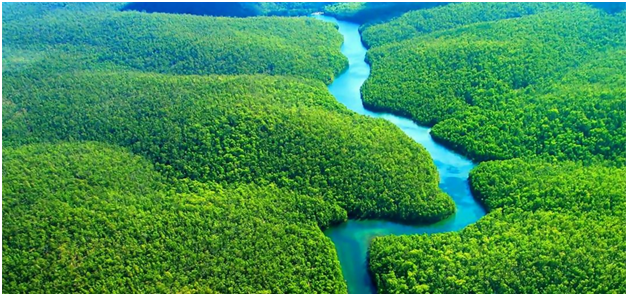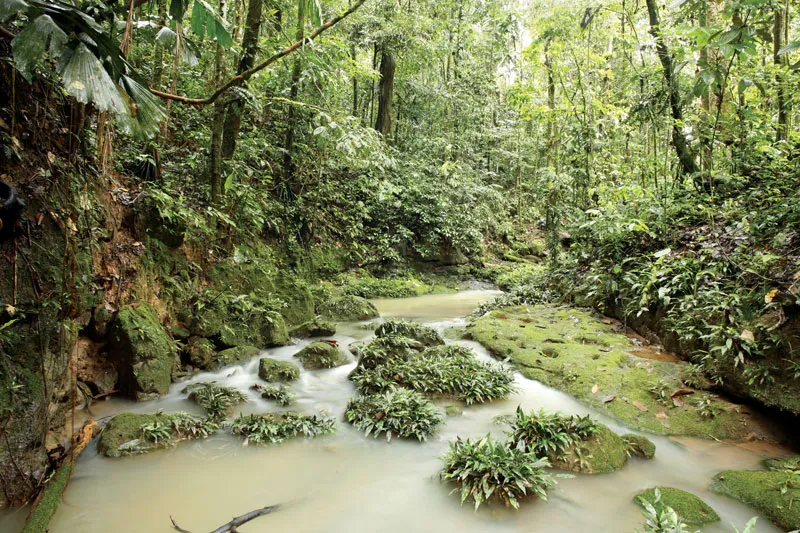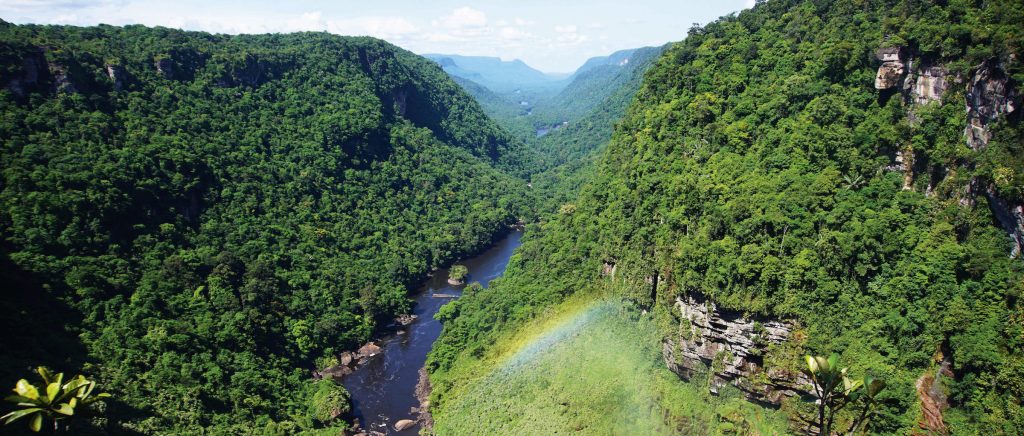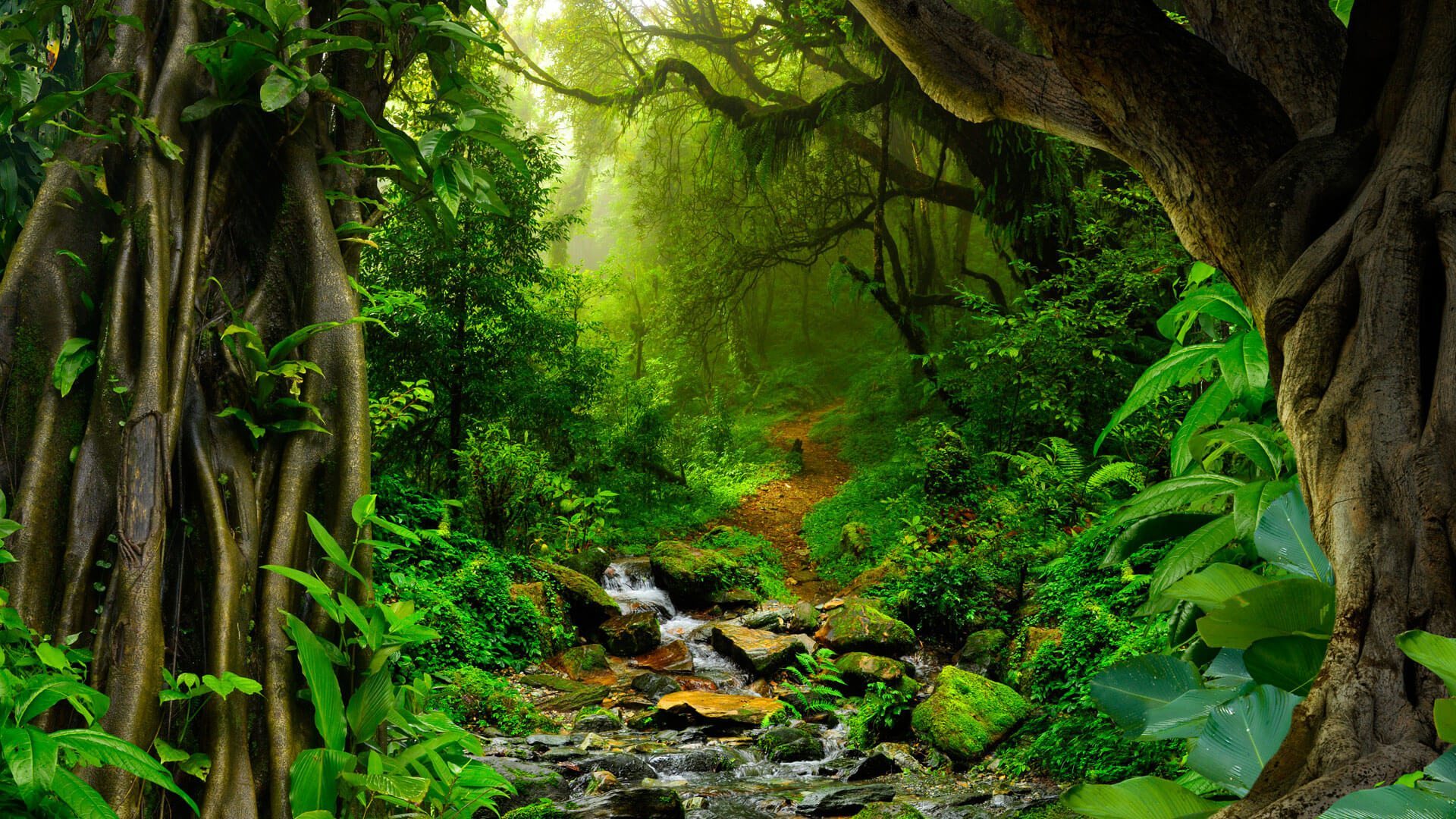As a passionate traveler and lover of nature, I have been fascinated by the amazing natural phenomena that occur all around us. Of the wonders and wonders of our planet earth, few combine grandiosity and ecological importance as is the case with the Amazon Rainforest. The verdant expanse that runs through nine South American countries is a global reminder of the infinite resilience and diversity of life on earth.
So in this article, Come with me on an incredible journey beneath the canopy of Madre de Dios for some surprises about biodiversity and interactions within life. In this series, We Will go through the geographical range of himalyas along with its importance in ecology and how it feeds into that delicate web of life which has made beauty potent.
Geographic location and size of the Amazon Rainforest
The Amazon Rainforest, also known as the “Lungs of the Earth” is an extensive region that covers around 2.1 million miles square (5.5 kilometers). The largest of all – this area spans the Amazon Basin, through regions in Brazil, Peru, Colombia and parts of Venezuela, Ecuador, Bolivia, Guyana, Suriname and French Guiana.
This may be incomprehensible in size, so let us compare this to the US perhaps – The Amazon Rainforest is staggeringly huge and covers a landmass greater than all of continental USA combined, whilst still being home to the largest extent of tropical rainforest globally. The rainforest is so huge, in fact that it acts as an enormous carbon sink; one of the greatest shields against climate change and poor air quality for our planet.

Importance of the Amazon Rainforest
Home to nearly one in ten species, not only is the Amazon Rainforest a spectacular natural displace but an incredible eco-system that supports life on this planet. It is the largest store of carbon on our planet, a major producer of oxygen add contains an estimated 390 billion individual trees divided into over 16.000 species (many not yet discovered or studied).
Moreover, it is the largest carbon sink in our planet: absorbs a lot of CO2 from atmosphere and emit O2 through photosynthesis. This essential process helps to reduce the impact of climate change and keep our natural atmosphere in orbit.
Apart from its environmental importance, the Amazon rainforest is where several native tribes reside who have gengtoto co-existed with nature for thousands of years keeping safe traditional knowledge and traditions.
Biodiversity in the Amazon Rainforest
Ah, The Amazon Rainforest: A veritable feast for nature lovers and scientists everywhere that sounds like a biodiversity wonderland. This place of plenty is the residence for some 2,500 species of termites and more than 1,000 different types of birds as well as a spectacular variety with an estimated number in individuals: it includes estimates to run over three hundred and ninety billion trees belongs to around sixteen thousand five-hundred taxa.
Amazon Rainforest Trees and flora
There are such a vast selection of plants in the Amazon Rainforest that can range from very tall trees to some dainty little orchids. Following are some of the most famous and popular species.
The Brazil Nut TreeThis majestic tree provides the delicious and sought-after edible seed known as the Brazil nut, which is not only a culinary treat but also an important food source to many indigenous societies.
Victoria Amazonica: This extraordinary aquatic plant, commonly known as the “Amazon Water Lily” produces leaves so huge they can hold a small child, and highlights some of the amazing adaptations found in rainforest.
Rubber Trees: Originating in the Amazon Rainforest, natural rubber was once a valuable product that helped shape the economy and history of this region.
And then there are the animals you will find in the Amazon Rainforest
The biodiversity present in the Amazon Rainforest animal kingdom is a show filled with lost count of species inside that most tropical forest. The rainforest is a living museum of evolutionary wonders, from majestic predators and lush vegetation to thunderous canopy-upending weather. Among the most captivating residents are :
JaguarsThese big cats are the largest predators in Amazonia and a key indicator of its health.
Poison Dart Frogs – They may be small, but these colourful amphibians pack quite a punch with their poison which is used by the indigenous communities for hunting and warfare.
Macaws: A stunning creature of the rainforest canopy, with its vivid plumage and squawking calls; they help complete this rich expanse by being an iconic presence in vibrant colors.

Threats to the Amazon Rainforest
Unfortunately, the Amazon Rainforest faces numerous threats that jeopardize its very existence and the incredible biodiversity it harbors. Among the most pressing challenges are:
- Deforestation: The relentless clearing of the rainforest for agriculture, logging, and development has resulted in the loss of vast swaths of this precious ecosystem, fragmenting habitats and disrupting delicate ecological balances.
- Climate Change: Rising temperatures, altered rainfall patterns, and increased frequency of extreme weather events pose significant risks to the Amazon Rainforest, potentially leading to widespread droughts, wildfires, and ecosystem degradation.
- Illegal Hunting and Poaching: The illegal trade in wildlife products, such as exotic pets, traditional medicines, and bushmeat, has placed immense pressure on many species, driving some to the brink of extinction.
Conservation efforts in the Amazon Rainforest
Recognizing the immense value and vulnerability of the Amazon Rainforest, various conservation efforts have been undertaken by governments, non-governmental organizations (NGOs), and local communities to safeguard this natural treasure. These initiatives include:
- Protected Areas: Significant portions of the Amazon Rainforest have been designated as protected areas, such as national parks, reserves, and indigenous territories, providing legal protection and resources for conservation efforts.
- Sustainable Development Programs: Organizations and local communities are working together to promote sustainable practices, such as agroforestry, ecotourism, and responsible resource management, ensuring that the rainforest’s resources are utilized responsibly.
- Research and Monitoring: Numerous scientific studies and monitoring programs are underway to better understand the complex dynamics of the Amazon Rainforest, informing conservation strategies and raising awareness about the importance of preserving this vital ecosystem.
Ecotourism in the Amazon Rainforest
For those seeking an immersive and sustainable experience in the heart of the Amazon Rainforest, ecotourism offers a unique opportunity to explore this natural wonder while minimizing environmental impact. Guided tours, jungle lodges, and community-based initiatives provide visitors with a chance to witness the breathtaking biodiversity firsthand, learn about the rich cultural heritage of indigenous communities, and contribute to the local economy in a responsible manner.
Embark on an unforgettable adventure and discover the wonders of the Amazon Rainforest for yourself! Join our eco-friendly tours and experience the awe-inspiring biodiversity, ancient cultures, and pristine natural beauty that this extraordinary region has to offer. Book your journey today and become a part of the conservation efforts to protect this global treasure for generations to come.

Conclusion: Preserving the wonders of the Amazon Rainforest
As I reflect on the profound majesty and ecological significance of the Amazon Rainforest, I am filled with a deep sense of reverence and responsibility. This vast expanse of verdant splendor is not merely a natural wonder; it is a living, breathing entity that sustains life on our planet and holds the key to countless scientific discoveries and cultural treasures.
The challenges facing the Amazon Rainforest are daunting, but they are not insurmountable. Through concerted conservation efforts, sustainable practices, and a collective commitment to preserving this global treasure, we can ensure that the Amazon Rainforest continues to thrive, nurturing its rich biodiversity and providing invaluable ecological services for generations to come. If you like reading this article then please consider reading our article about BSNL.

